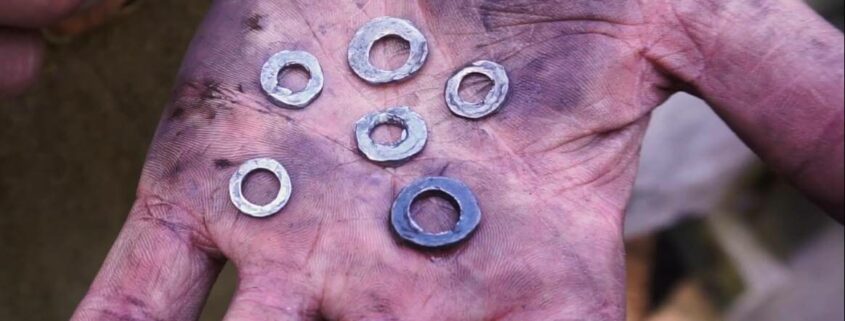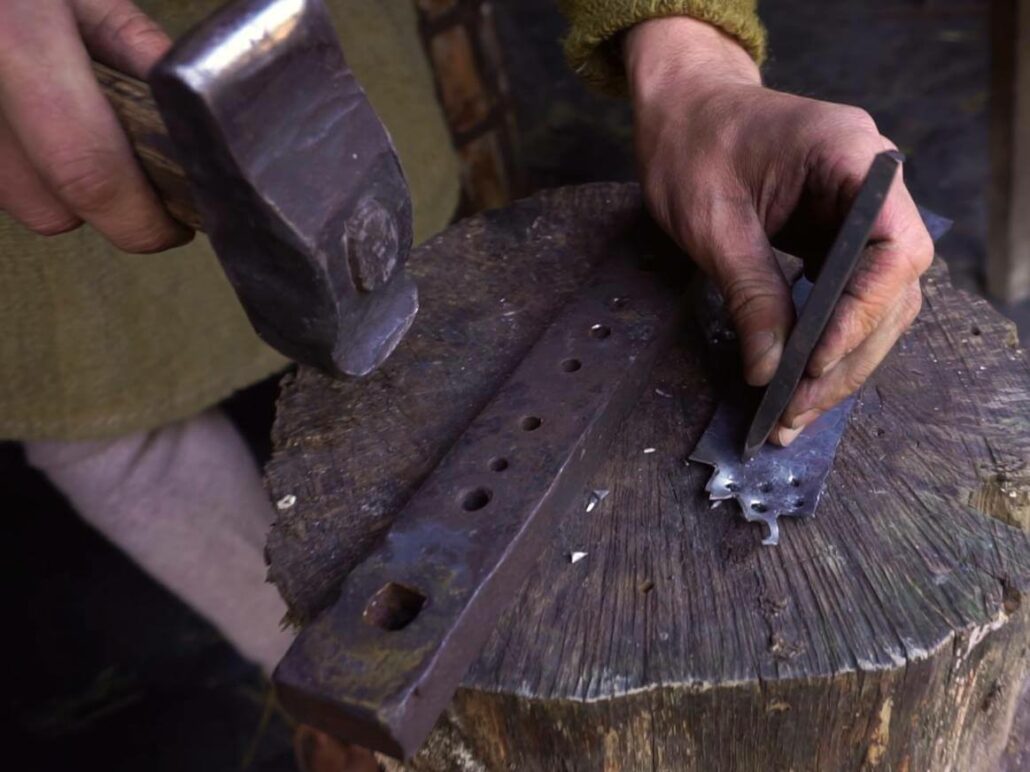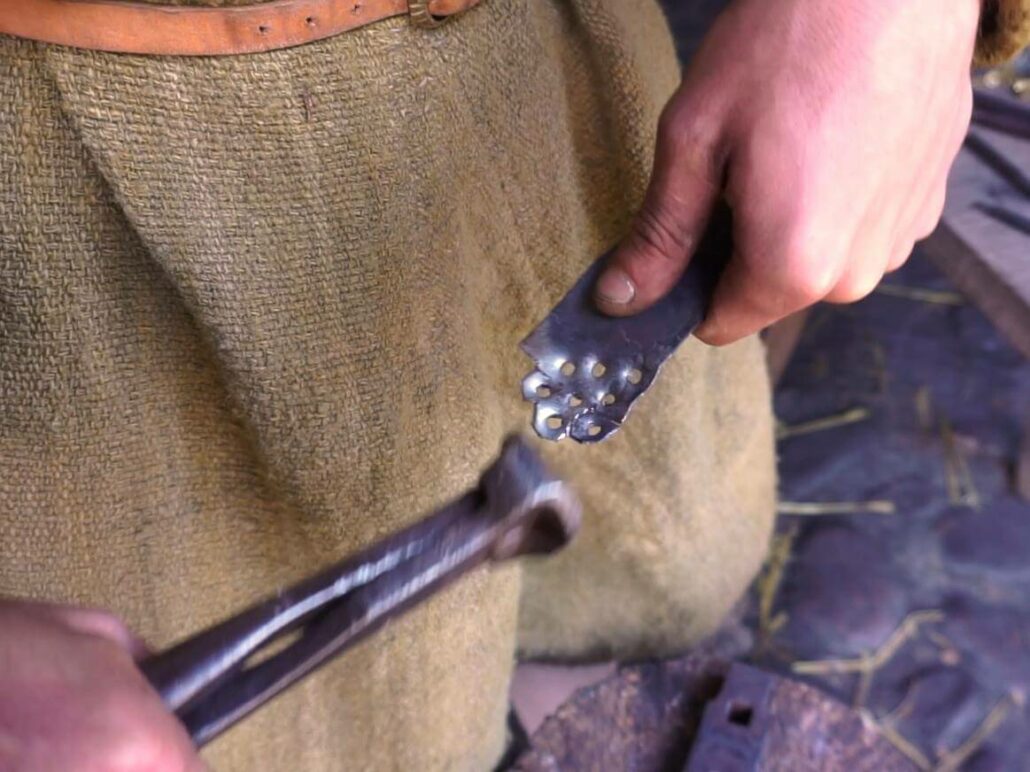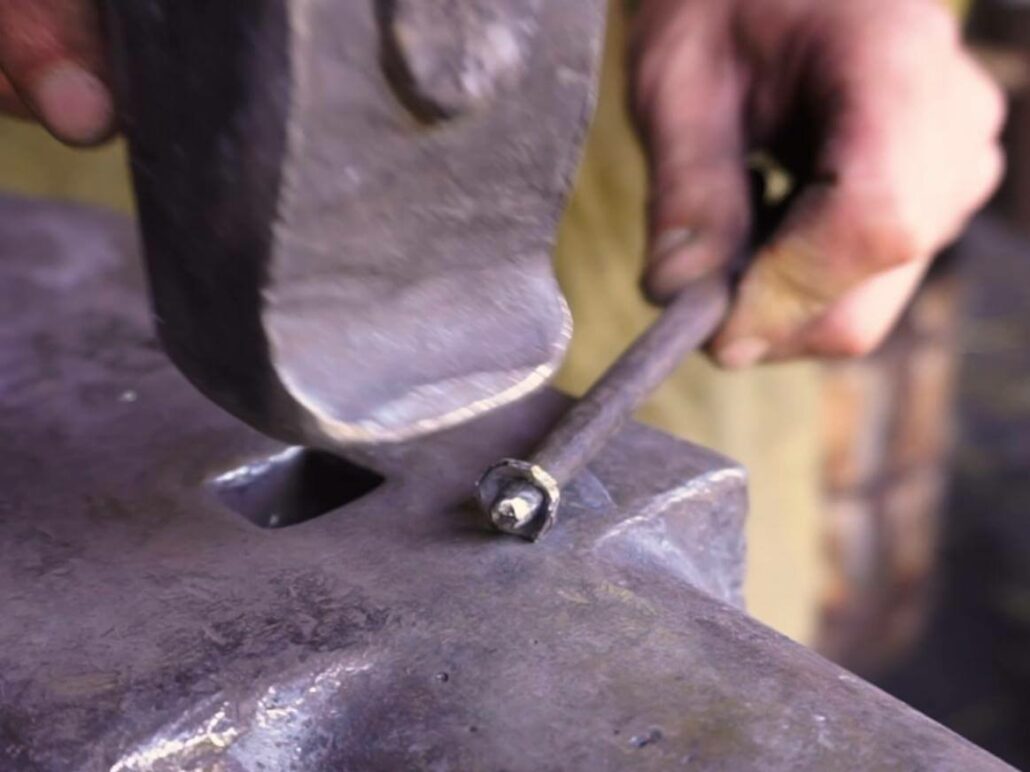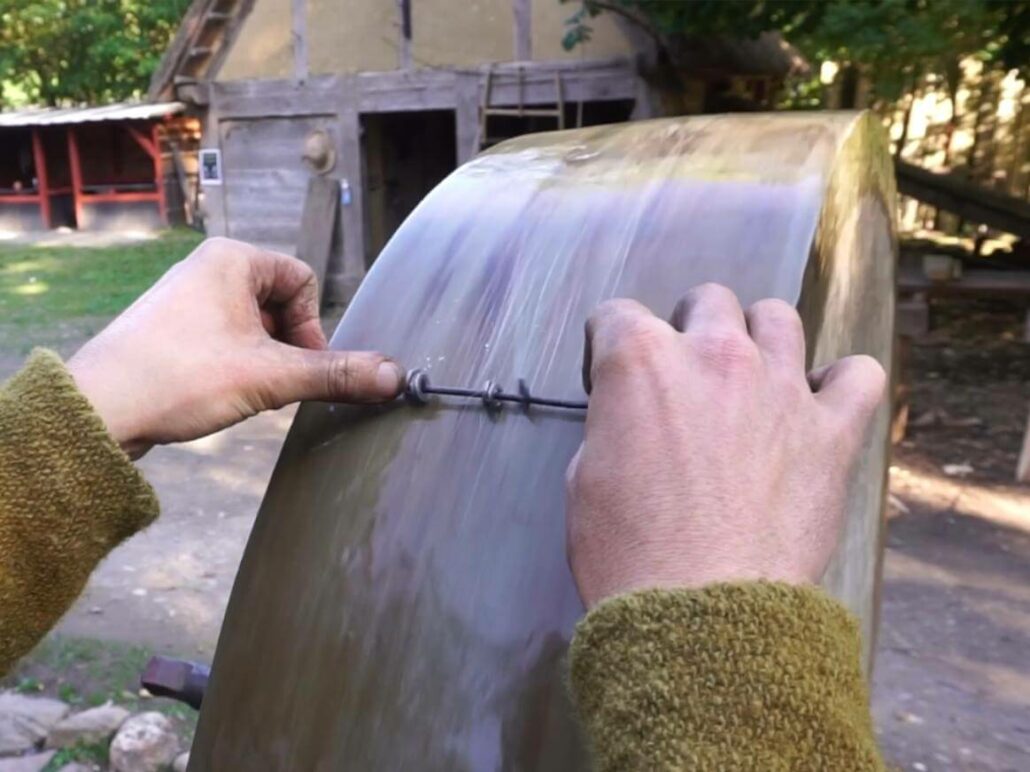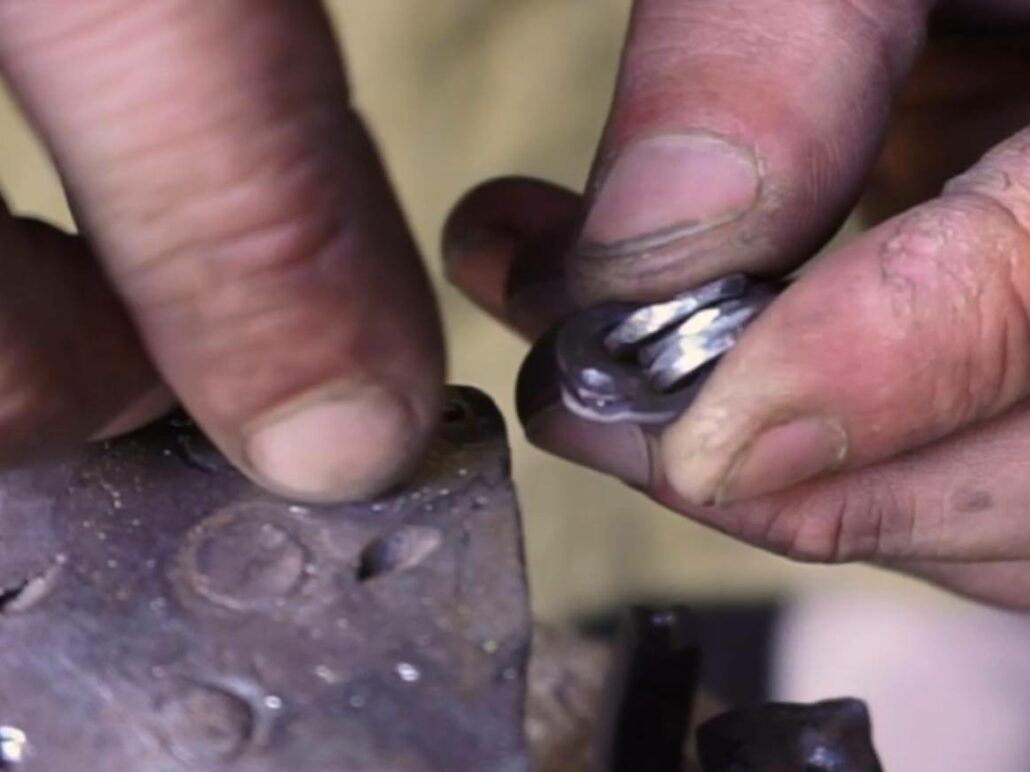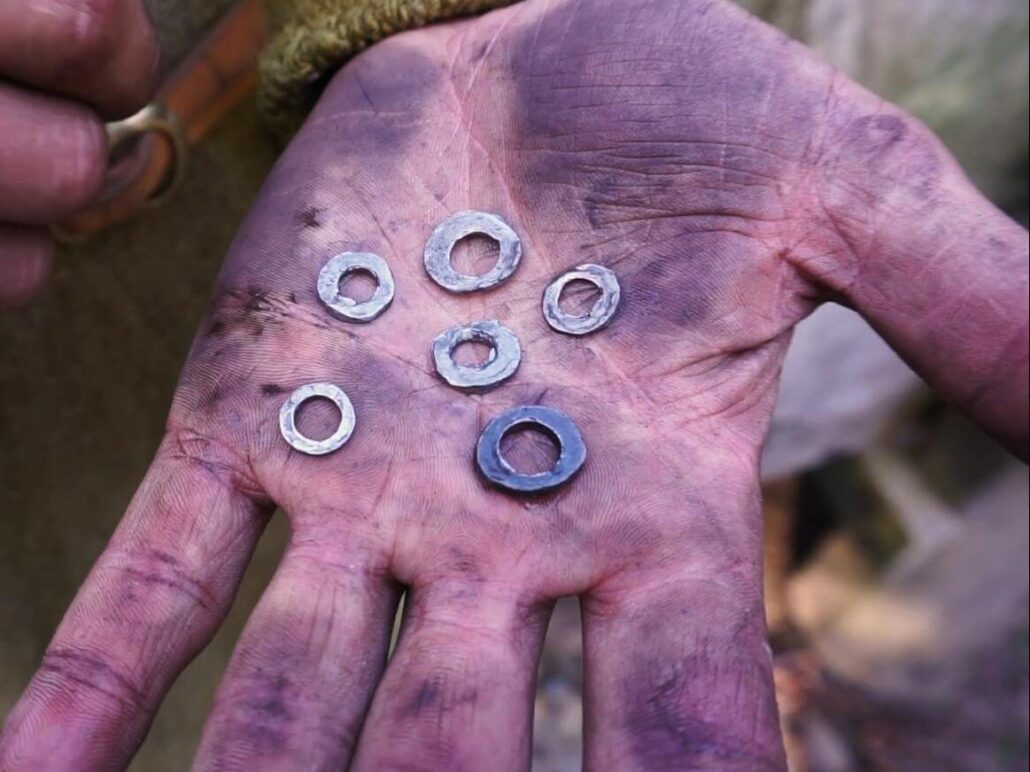Drifted Rings
When we look at solid rings in chainmail, we quickly think of punching as a method for production. Yet there is another method that is less material-consuming and was perhaps even more in use during the middle ages. This process is called drifting. Drifted rings are great!
The advantage of drifted rings is that they can be produced economically with a minimum amount of waste. This is especially useful when there is no efficient technology to upcycle metal scraps.
So what is the difference between punched and drifted?
Punching means removing a circle from the sheet. The tool looks like a cylinder. Drifting means pushing the material from the sheet to the sides. The tool looks like a cone.
With these steps, you make drifted rings:
- 1. Take a pointy conical rod and hammer it through a thin sheet of metal.
- 2. Cut off hexagonal shapes with a hole in the middle.
- 3. Place the piece on a rod and hammer it into the shape of a ring.
- 4. Put multiple rings onto a nail and sand off their sharp edges.
- 5. Use 50% drifted rings in combination with 50% riveted rings to build chainmail sheets.
There are many ways to drift rings. The sheet could be more like a band. The holes could also be slits. Anyway here is a video of how I experimentally made some drifted rings. My deep gratitude goes to the Medieval Center in Denmark who supported me with filming the process on their location.
That means solid chainmail rings can be welded, punched, or drifted. It is very difficult to tell the difference by looking at the rings in historic mail. Yet the production method can be revealed when the rings are sanded and the structures in the metal are studied.
Read more about the other solid rings: Punched Rings.
Read about Welded Rings.
Or buy Solid Rings.

